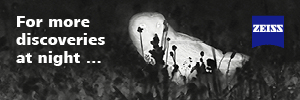| This article is incomplete. This article is missing one or more sections. You can help the BirdForum Opus by expanding it. |
Overview
Part of the series of North Norfolk coastal reserves that, ornithologically, are among the richest areas in Britain. Titchwell has a variety of coastal habitat types including shingle beach and sand dunes, freshwater and tidal reedbeds, Sea Aster saltmarsh, and brackish and freshwater pools.
Birds
Famous for Pied Avocet, there are also many other species breeding at Titchwell including Little Grebe, Black-headed Gull, Gadwall and post springs. A long-staying Black-winged Stilt became resident here in September 1993 but not seen since 2005. Little Egret is becoming a familiar sight and Spotted Crake is sometimes seen in autumn. Large numbers of Barn Swallow roost in the reedbeds in autumn and huge flocks of hirundines and swifts feed over the pools often in the company of Little Gull and Black Tern. Skuas occur offshore during the autumn.
Winter sees the arrival of waterfowl including Dark-bellied Brent Goose and Pink-footed Goose. Black Brant is occasionally seen amongst the Brent flocks. Eurasian Wigeon, Common Teal and Common Goldeneye also occur. Red-breasted Merganser, Common Scoter, Long-tailed Duck and Common Eider are present offshore as well as Red-throated Diver and Great Crested Grebe with occasionally other divers and grebes. Waders include a wide range of species with particularly good numbers of Bar-tailed Godwit, Sanderling and Grey Plover.
Horned Lark, Snow Bunting and Twite regularly feed along the beaches and saltmarsh areas. Passerine migrants are becoming more frequent at Titchwell and Bluethroat, Common Firecrest and Red-breasted Flycatcher have been recorded in recent years.
Check-list
Birds you can see here include:
Little Grebe, Great Crested Grebe, Red-necked Grebe, Slavonian Grebe, Great Cormorant, Northern Gannet, Great Bittern, Little Egret, Grey Heron, Eurasian Spoonbill, Pink-footed Goose, Greylag Goose, Canada Goose, Dark-bellied Brent Goose, Common Shelduck, Eurasian Wigeon, Gadwall, Common Teal, Mallard, Northern Pintail, Garganey, Northern Shoveler, Common Pochard, Tufted Duck, Common Eider, Long-tailed Duck, Common Scoter, Velvet Scoter, Common Goldeneye, Red-breasted Merganser, Western Marsh Harrier, Hen Harrier, Montagu's Harrier, Eurasian Sparrowhawk, Common Kestrel, Merlin, Northern Hobby, Red-legged Partridge, Grey Partridge, Spotted Crake, Water Rail, Common Moorhen, Eurasian Coot, Eurasian Oystercatcher, Pied Avocet, Little Ringed Plover, Ringed Plover, Grey Plover, Northern Lapwing, Red Knot, Sanderling, Little Stint, Temminck's Stint, Curlew Sandpiper, Purple Sandpiper, Dunlin, Ruff, Common Snipe, Jack Snipe, Eurasian Woodcock, Black-tailed Godwit, Bar-tailed Godwit, Whimbrel, Eurasian Curlew, Spotted Redshank, Common Redshank, Common Greenshank, Green Sandpiper, Wood Sandpiper, Common Sandpiper, Ruddy Turnstone, Red-necked Phalarope, Arctic Skua, Great Skua, Little Gull, Black-headed Gull, Common Gull, Lesser Black-backed Gull, Herring Gull, Great Black-backed Gull, Sandwich Tern, Common Tern, Arctic Tern, Little Tern, Black Tern, Common Woodpigeon, Barn Owl, Little Owl, Tawny Owl, Short-eared Owl, Common Swift, Great Spotted Woodpecker, Eurasian Skylark, Horned Lark, Sand Martin, Barn Swallow, Northern House Martin, Meadow Pipit, Rock Pipit, Water Pipit, Yellow Wagtail, Pied Wagtail, European Stonechat, Northern Wheatear, Common Grasshopper Warbler, Sedge Warbler, Common Reed Warbler, Lesser Whitethroat, Common Whitethroat, Blackcap, Willow Warbler, Bearded Tit, House Sparrow, Eurasian Tree Sparrow, Common Magpie, Carrion Crow, Common Starling, Chaffinch, Brambling, European Goldfinch, European Greenfinch, Eurasian Linnet, Twite, Common Bullfinch, Snow Bunting, Yellowhammer, Reed Bunting, Corn Bunting
Site Information
History and Use
To do
Areas of Interest
To do
Access and Facilities
Titchwell lies on the A149 Hunstanton to Brancaster road 10km east of Hunstanton. The reserve car park is situated between Thornham and Titchwell villages; there is a parking charge for non RSPB Members. There is a cafe, information centre, toilets and shop as well as three observation hides, paths and a picnic area.
Grid Ref: TF750438
Contact Details
Main Road, Titchwell, King's Lynn, Norfolk, PE31 8BB
Phone: 01485 210779 Fax: 01485 210779 Email: [email protected]
External Links
Content and images originally posted by Steve
Reviews
GAZ's review This was my second visit to the area and a first visit to Titchwell so my wildfowl / wader skills are not what they should be but this is an ideal sight to brush up - Also ticked my first Marsh Harrier - excellent. Throughly recomended - even the wife loved it !!
Pros
- Plenty to see good variety - Especially for 'novices'
Cons
- Very Popular
stu's review All in all a excellent reserve,great facilities and usually lots to see. The only downside is that it can get a little crowded. Pros
- Great Hides with easy access
Robzando's review This site has excellent facilities, the hides are well placed and the walking is easy. The winter months have the greatest variety of birds and is very popular at the weekends. However, visiting at other times of the year will not dissapoint and going during the week, out of the school holiday period, will be of added benefit. It is a good location with plenty to look at and you want to allow a good 3-4 hours at least... Pros
- Easy walking with a great variety of birds
Cons
- Tends to get busy winter weekends
teamsaint's review This October I recorded 73 species in just 4 hours on the reserve which is my record. Also we saw a grey seal. It is an excellent place to take the family as there is a good shop and good hides where you can get very close views of the birds. Pros
- well organised
- good hides
- good shop
- good for families and great birds
Cons
- can be quite crowded
Dylan999's review There are 3 hides in all Parrinder being the favourite hide of most visitors. Best to get there early, as it soon gets busy.





